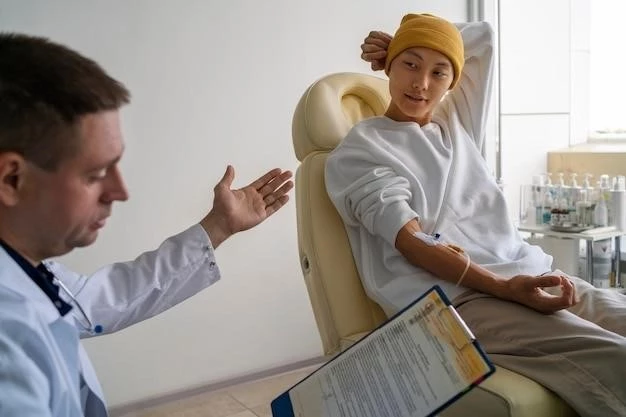Article Plan⁚ Disease ─ Myxoid Liposarcoma
Introduction to Myxoid Liposarcoma
Myxoid liposarcoma (MLPS) is a subtype of liposarcoma remarkably characterized by adipose tissue neoplasms of myxoid appearance․ MLPS ranks as the second most common type of liposarcoma, accounting for 30-40% of all cases․ This malignancy predominantly occurs in the limbs٫ with a higher prevalence in the legs٫ especially the thighs٫ followed by the buttocks․ Known for its distinct morphology and clinical course٫ MLPS exhibits a spectrum of low-grade to high-grade forms٫ with round cell liposarcoma representing the more aggressive end of the spectrum․ Understanding the features and prevalence of myxoid liposarcoma is crucial for accurate diagnosis and appropriate treatment planning․

Clinical Characteristics of Myxoid Liposarcoma
Myxoid liposarcoma (MLPS) is recognized for its unique clinical characteristics, often appearing as a soft tissue mass with a gelatinous texture due to the myxoid stroma․ This subtype of liposarcoma typically affects individuals in their third to fifth decades of life, with a slight predilection for younger age groups compared to other liposarcoma subtypes․ Commonly observed in the extremities, particularly in the lower limbs, MLPS may present as a painless lump that gradually increases in size․
Despite its slow growth rate compared to other types of liposarcoma, MLPS has the potential to recur locally and metastasize to distant sites, such as the lungs․ Patients with MLPS may also experience symptoms such as pain, numbness, or weakness if the tumor compresses nearby nerves or structures․ It is essential for individuals diagnosed with MLPS to undergo regular follow-ups and imaging studies to monitor the progression of the disease and detect any recurrence or metastasis early․
Understanding the clinical characteristics of myxoid liposarcoma is crucial for healthcare providers to tailor an appropriate treatment plan and provide patients with the necessary support and care throughout their journey with this rare malignancy․ Staying informed about the symptoms and potential outcomes of MLPS can empower patients to actively participate in their healthcare decisions and seek medical attention promptly for any concerning changes in their condition․
Causes and Risk Factors
The exact cause of myxoid liposarcoma (MLPS) remains unknown, but researchers believe it may be linked to genetic mutations in the fat cells that lead to the development of this rare malignancy․ While the precise factors triggering these mutations are yet to be elucidated, certain risk factors have been identified․ MLPS commonly affects individuals in their third to fifth decades of life, with a higher incidence in younger age groups compared to other liposarcoma subtypes․ Additionally, MLPS has a predilection for the lower limbs, particularly the thighs, and buttocks․
Understanding the potential risk factors associated with MLPS can aid in early detection and prompt intervention․ Although the causative factors are not fully understood, being aware of the common age group and anatomical locations that MLPS tends to affect can help healthcare providers and individuals remain vigilant for any signs or symptoms that may warrant further investigation․ While the etiology of MLPS may still be under investigation, recognizing these risk factors can contribute to proactive monitoring and timely management of this distinct form of liposarcoma․
Diagnosis of Myxoid Liposarcoma
Diagnosing myxoid liposarcoma (MLPS) often involves a combination of imaging studies, such as MRI and CT scans, along with a biopsy to confirm the presence of the tumor․ Radiological examinations can help identify the location, size, and extent of the lesion, aiding in treatment planning․ A biopsy, where a sample of tissue is taken and examined under a microscope, is crucial for determining the specific subtype of liposarcoma, including distinguishing MLPS from other soft tissue sarcomas․

Pathological analysis of the biopsy sample will reveal the characteristic features of MLPS, such as the myxoid stroma and presence of lipoblasts․ Additionally, genetic testing may be performed to detect specific molecular markers and translocations associated with MLPS, providing valuable information for prognosis and treatment selection․ Collaborating with a multidisciplinary team of healthcare professionals, including radiologists, pathologists, and oncologists, can ensure a comprehensive and accurate diagnosis of myxoid liposarcoma․
Patients undergoing diagnostic procedures for suspected MLPS should engage in open communication with their healthcare providers, asking questions to better understand the diagnostic process and its implications․ Maintaining a proactive approach to seeking medical advice and following through with recommended tests can aid in early detection and prompt management of myxoid liposarcoma․
Treatment Options
Management of myxoid liposarcoma often involves surgical resection as the primary approach, accompanied by adjuvant radiotherapy to target any remaining cancer cells and minimize the risk of recurrence․ In some cases, chemotherapy may also be considered, especially for aggressive or advanced MLPS․
Collaboration with a multidisciplinary team of healthcare professionals is crucial to develop a personalized treatment plan tailored to each individual’s specific condition and needs․ Patients with myxoid liposarcoma should actively engage in discussions with their healthcare providers to understand the rationale behind the recommended treatment options and any potential side effects or risks associated with the chosen approach․
Being well-informed about the available treatment modalities and actively participating in decision-making processes can empower patients to take charge of their health and well-being․ It is essential for individuals diagnosed with myxoid liposarcoma to maintain open communication with their healthcare team and adhere to the prescribed treatment regimen to optimize the chances of successful outcomes and long-term disease management․
Surgical Management
Surgical resection combined with adjuvant therapies like radiotherapy plays a central role in the management of myxoid liposarcoma․ The primary aim of surgery is to remove the tumor with clear margins, reducing the risk of recurrence․ Adjuvant radiotherapy is often employed to target any residual cancer cells, particularly in cases where complete resection may not be feasible or to address microscopic disease spread․
Patients undergoing surgical management for myxoid liposarcoma should engage in detailed discussions with their healthcare team to comprehend the goals, risks, and expected outcomes of the procedure․ It is essential to follow the post-operative care instructions diligently and attend all scheduled follow-up appointments to monitor recovery and assess the effectiveness of the treatment approach․
Collaboration with experienced surgeons and oncologists specializing in sarcoma care is crucial for optimal outcomes․ Patients should maintain open communication with their healthcare providers, report any concerning symptoms post-surgery promptly, and adhere to the recommended treatment plan to enhance the chances of successful recovery and long-term disease control․
Role of Radiotherapy
Radiotherapy plays a crucial role in the management of myxoid liposarcoma (MLPS), particularly as an adjuvant treatment following surgical resection․ By employing high-energy radiation beams, radiotherapy aims to target and destroy any remaining cancer cells in the local area where the tumor was located․ This approach helps reduce the risk of local recurrence and may also be used to address microscopic disease spread that surgery alone cannot eliminate․
Patients undergoing radiotherapy for MLPS should engage in open discussions with their healthcare providers to understand the rationale behind this treatment modality, including the potential benefits and associated side effects․ Adhering to the prescribed radiotherapy schedule and following the recommendations provided by the radiation oncology team are essential for optimizing the effectiveness of this therapy․
Collaboration between the surgical team, radiation oncologists, and other healthcare professionals is paramount to ensure holistic and coordinated care for individuals with myxoid liposarcoma․ Patients should actively participate in their treatment journey, communicate any concerns or treatment-related issues promptly, and maintain regular follow-up appointments to monitor their response to radiotherapy and overall disease management․
Potential for Chemotherapy
Chemotherapy may be considered in the management of myxoid liposarcoma (MLPS), particularly for cases where the tumor exhibits aggressive behavior or has metastasized․ While surgery remains the primary treatment approach for MLPS, chemotherapy can complement surgical resection and adjuvant radiotherapy in certain situations․
Patients being evaluated for chemotherapy as part of their treatment plan should engage in thorough discussions with their healthcare team to weigh the potential benefits of chemotherapy against any associated side effects․ Understanding the role of chemotherapy in targeting cancer cells systemically can provide insight into its potential impact on disease control and overall outcomes․
Adhering to the prescribed chemotherapy regimen, attending regular follow-up appointments, and communicating any treatment-related concerns or side effects to healthcare providers are essential for optimizing the efficacy of chemotherapy in managing myxoid liposarcoma․ Patients should actively participate in their treatment decisions and collaborate closely with their healthcare team to ensure comprehensive care and support throughout their treatment journey․
Molecular Markers and Genetic Translocations
Myxoid liposarcoma (MLPS) is characterized by specific molecular markers and chromosomal translocations, most notably the FUS-DDIT3 fusion gene resulting from a translocation between chromosomes 12 and 16․ This genetic aberration plays a significant role in the pathogenesis of MLPS by affecting adipogenic differentiation and promoting oncogenic gene expression․
Understanding the molecular profile of myxoid liposarcoma can provide valuable insights into disease progression, prognosis, and potential therapeutic targets․ Molecular testing, including FISH or PCR analysis to detect the FUS-DDIT3 fusion gene, can aid in confirming the diagnosis of MLPS and guiding treatment decisions․
Patients diagnosed with MLPS should discuss the implications of molecular markers and genetic translocations with their healthcare providers to comprehend the significance of these factors in their disease management․ By staying informed about the molecular characteristics of MLPS, individuals and caregivers can actively participate in treatment discussions and make well-informed decisions regarding their care․
Prognosis and Survival Rates
Prognosis for myxoid liposarcoma (MLPS) is influenced by various factors, including the tumor size, grade, location, and response to treatment․ Generally, MLPS has a more favorable prognosis compared to other subtypes of liposarcoma, with a 5-year survival rate ranging from 60% to 85%․ However, the presence of aggressive features, such as high-grade areas or metastasis, can impact the overall prognosis and treatment outcomes․
Survival rates for MLPS are often dependent on the stage of the disease at diagnosis, the effectiveness of treatment strategies, and individual patient factors․ Engaging in regular follow-up care, adhering to treatment recommendations, and maintaining a healthy lifestyle can positively influence the long-term prognosis for individuals diagnosed with myxoid liposarcoma․
Patients diagnosed with MLPS should discuss their prognosis with healthcare providers to gain a better understanding of their individual risk factors and expected outcomes․ Seeking support from healthcare professionals, caregivers, and support groups can provide emotional and practical assistance throughout the treatment journey and contribute to improved quality of life․
Advisory for Patients and Caregivers
For individuals diagnosed with myxoid liposarcoma (MLPS) and their caregivers, it is crucial to prioritize open communication with healthcare providers and actively engage in discussions regarding treatment options, prognosis, and potential side effects․ Understanding the disease process, treatment modalities, and the importance of adherence to the prescribed plan is essential for optimal outcomes․
Seeking support from support groups or counselors can also provide emotional assistance during this challenging time․ In addition, maintaining a healthy lifestyle, including regular exercise and a balanced diet, can contribute to overall well-being and may positively impact the response to treatment․
Patients and caregivers should educate themselves about MLPS, ask questions, and ensure they are well-informed partners in the decision-making process․ Taking an active role in managing the disease, staying organized with medical appointments and records, and seeking second opinions when necessary can empower individuals in their healthcare journey․
Ongoing Research and Clinical Trials
Continuous research and clinical trials are essential in advancing our understanding of myxoid liposarcoma (MLPS) and exploring new treatment modalities․ Ongoing studies focus on improving the effectiveness of surgical techniques, optimizing radiotherapy protocols, and investigating novel chemotherapy agents tailored to target specific molecular markers in MLPS․
Patient participation in clinical trials can provide access to cutting-edge treatments and contribute to the development of future therapies for MLPS․ Healthcare providers may recommend participation in research studies based on individual patient characteristics and the goals of the trial․ Engaging in clinical trials not only benefits patients by offering innovative treatment options but also contributes to the collective knowledge and progress in managing myxoid liposarcoma․
Staying informed about the latest research findings and participating in discussions with healthcare providers regarding potential clinical trial opportunities can empower patients and caregivers to make informed decisions about their treatment regimen․ Research endeavors play a pivotal role in shaping the future landscape of care for individuals affected by myxoid liposarcoma․
Special Considerations for Pediatric Cases
Diagnosing and treating myxoid liposarcoma (MLPS) in pediatric cases requires special considerations due to the unique challenges posed by young age and growth factors; Pediatric patients may present with different symptom manifestations, and the impact of treatment on their developing bodies needs careful assessment․
Collaboration with healthcare providers experienced in pediatric oncology is essential to ensure the most appropriate management strategies for young patients with MLPS․ Treatment plans should factor in the child’s growth and development, aiming to minimize long-term effects on physical and cognitive functions․
Parents and caregivers of children with MLPS should actively participate in treatment discussions, seek additional support for their child’s emotional well-being, and stay informed about potential treatment-related implications․ Engaging in open communication with the medical team and advocating for the child’s comprehensive care are vital components of managing myxoid liposarcoma in pediatric cases․
Preventive Measures and Follow-up Strategies
While there are no specific preventive measures for myxoid liposarcoma, regular medical check-ups and prompt evaluation of any concerning lumps or symptoms can aid in early detection․ Monitoring for any changes in existing lumps or the development of new masses is crucial for timely intervention․
Following a diagnosis of myxoid liposarcoma, adherence to recommended follow-up appointments is essential for monitoring disease progression, response to treatment, and detecting any potential recurrence or metastasis․ Engaging in open communication with healthcare providers can ensure comprehensive care and timely adjustments to the treatment plan as needed․
Patients and caregivers should prioritize a healthy lifestyle, including regular exercise and a balanced diet, to support overall well-being during the treatment and recovery phases․ Seeking emotional support from counselors or support groups can also assist individuals in coping with the challenges associated with myxoid liposarcoma․
